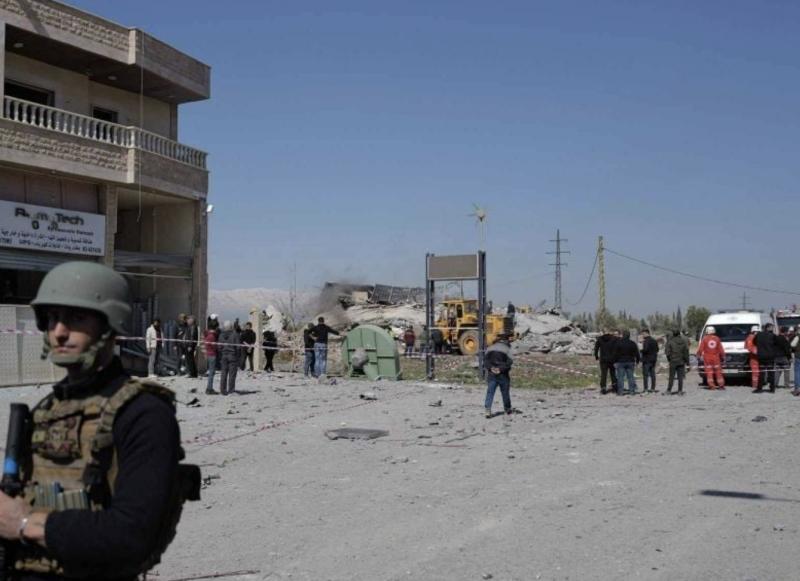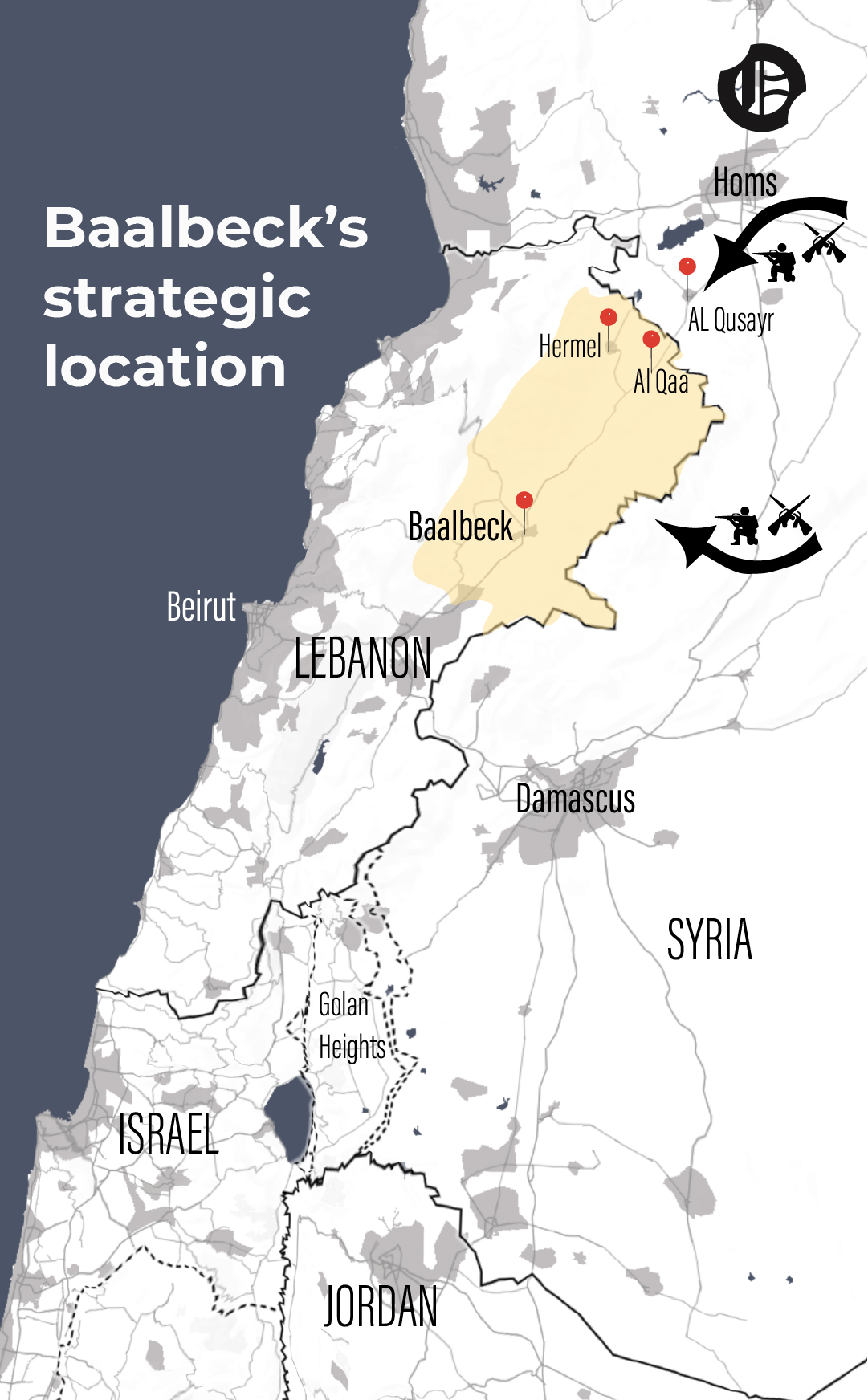
The site of one of the Israeli strikes on the Sefri road, just before Baalbeck. (Credit: Matthieu Karam/L'Orient-Le Jour)
Some 100 kilometers separate Baalbeck from the Lebanese-Israeli border. However, this northern Bekaa Valley town and its surrounding area have repeatedly come under Israeli fire since Feb. 26. Israel had initially targeted southern Lebanon.
Tel Aviv’s army struck the vicinity of Baalbeck four times on Monday and Tuesday killing three people, including two Hezbollah fighters.
With Hezbollah placing conditions on any ceasefire agreement to the end of hostilities in Gaza, are these in-depth attacks part of the pressure Israel has been placing on its enemy? Or are they linked to Israel’s strategic objectives in its war of attrition against Hezbollah, given Baalbeck’s strategic geographic location in Lebanon?
“The Israeli strikes on Baalbeck are simply a show of force,” said a source close to Hezbollah. “It’s a way for the enemy to show that it can strike anywhere in Lebanon in the hope of bringing the resistance to heel,” the source added.
The attacks on Baalbeck are symbolic as this area is considered the cradle of the Iran-aligned movement. It was there that Shiite Sheikh Sobhi Toufayli founded in 1979 the Association of Muslim Ulemas of the Bekaa, an organization under the yoke of velayat-e faqih in the wake of the Islamic revolution in Iran.
This religious group gradually evolved into Hezbollah, with Sheikh Toufayli as its first Secretary General. To this day, many of the party’s leaders and the majority of its MPs hail from this area.
“Striking Baalbeck certainly sends out an important message,” said Khaled Hamadeh, a retired general and military expert. “However, the taboo was already broken on Feb. 26. Israel is now striking for other reasons.”
‘Logistical rear base’
Located on Lebanon’s eastern border, Baalbeck is seen as the gateway to Syria. This is where Hezbollah’s weapons and fighters pass through on their way to and from Syria to southern Lebanon. This geographical advantage is important as many “cargoes” from Iran pass through the Syrian territory or airports before arriving in Lebanon.
“There are many illegal border crossings in the north of Baalbeck, around Hermel, which Hezbollah uses for military purposes,” said Hamadeh.
These crossings — which are also used for smuggling, an essential source of funding for Hassan Nasrallah’s party — lead to the Syrian town of Quseir. In 2013, this town was one of the first that Hezbollah seized from the Syrian opposition to the Assad regime. The militia has maintained a considerable presence and influence there to this day.

By striking Baalbeck, Israel is seeking or at least threatening to disrupt Hezbollah’s supply lines. However, a source close to Hezbollah said, “The enemy will not be able to hinder our supplies. And yet they have tried hard. In 2006, they hit this area repeatedly, but the flow of arms didn’t stop for a second.”
According to publicly available data, the city of Baalbeck alone was hit more than 70 times in the July 2006 war between Hezbollah and Israel. Between Aug. 1 and 2 of the same year, the Israeli army’s Operation Sharp and Smooth targeted many parts of the city, including a hospital run by an Iranian organization.
Baalbeck’s proximity to Syria is not its only strategic advantage. “Unlike south Lebanon, which is easily accessible to the Israelis, Baalbeck is dozens of kilometers away from the northern border,” Hamadeh said. “It is therefore the ideal place for Hezbollah to store its most strategic weapons and equipment.”
According to Israel’s Alma Research and Education Centre — which specializes in military issues on Israel’s northern border but is accused of serving as a propaganda tool for Tel Aviv — Hezbollah keeps some 5,000 long- and medium-range missiles in Baalbeck, including Scud missiles which can hit with precision up to 700 kilometers from the target. It also keeps batteries of ground-to-air missiles, which could prove very useful against Israel as it relies mainly on air superiority.
However, Hezbollah keeps only short-range missiles (Burkan or Cornet missiles are the only ones used so far in the current war) and man-portable air defense systems in southern Lebanon.
“The Baalbeck region serves as Hezbollah’s logistical and operational rear base,” according to a study by Alma Center. “This region is home to Hezbollah's general ammunition and logistics depots, long- and medium-range missile storage and launching sites, and it is believed that in this area, Hezbollah is trying to carry out part of the precision missile project.”
Thus, this is where the armed party seems to stockpile its heavy artillery, which until now has been kept secret. Now that Baalbeck is under Israeli fire, will the veil be lifted anytime soon on what Hassan Nasrallah called “capabilities that have yet to be disclosed”?
This article was originally published in L'Orient-Le Jour. Translated by Joelle El Khoury.